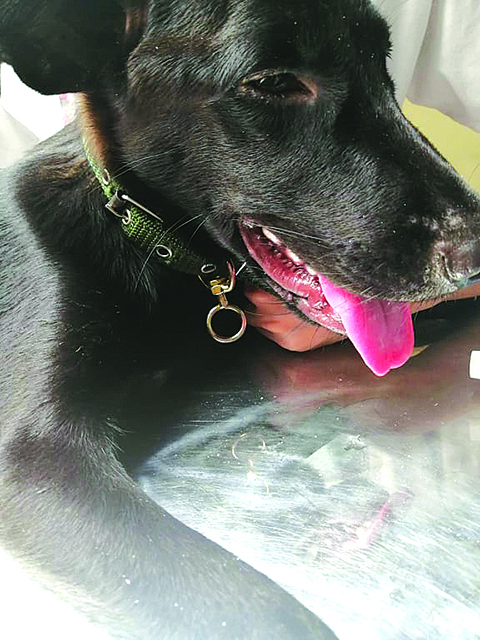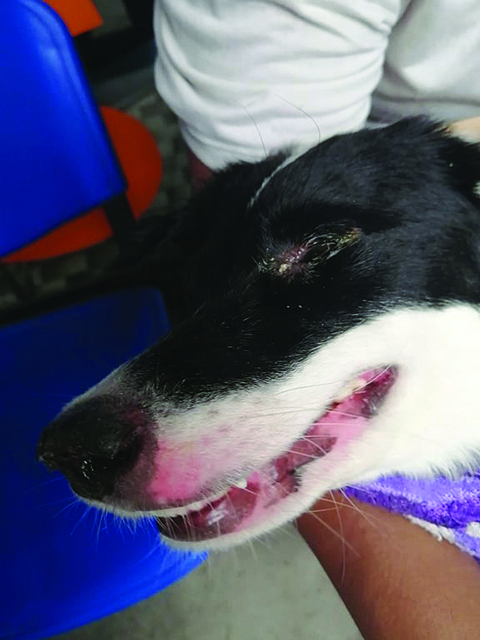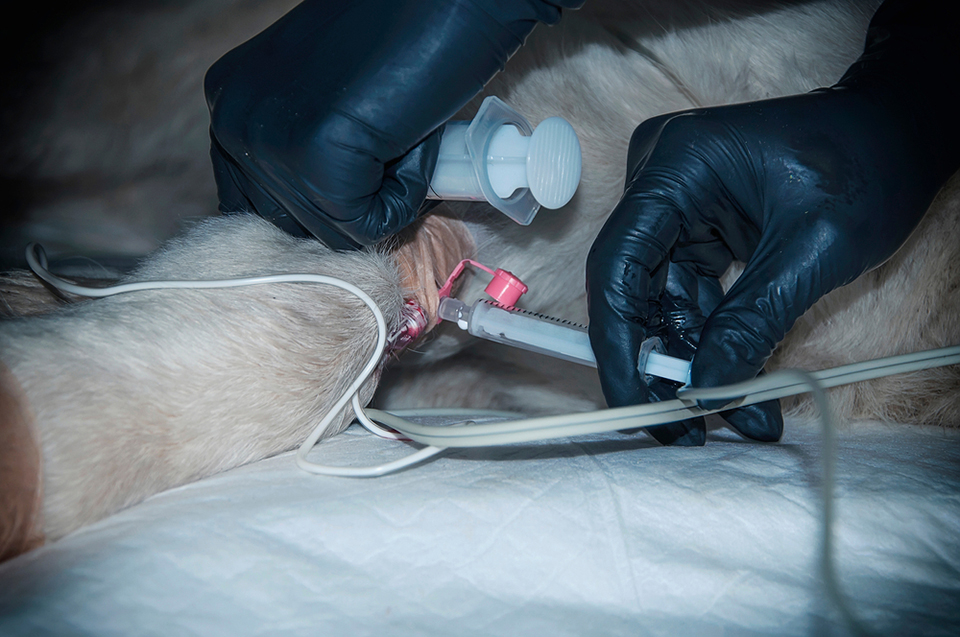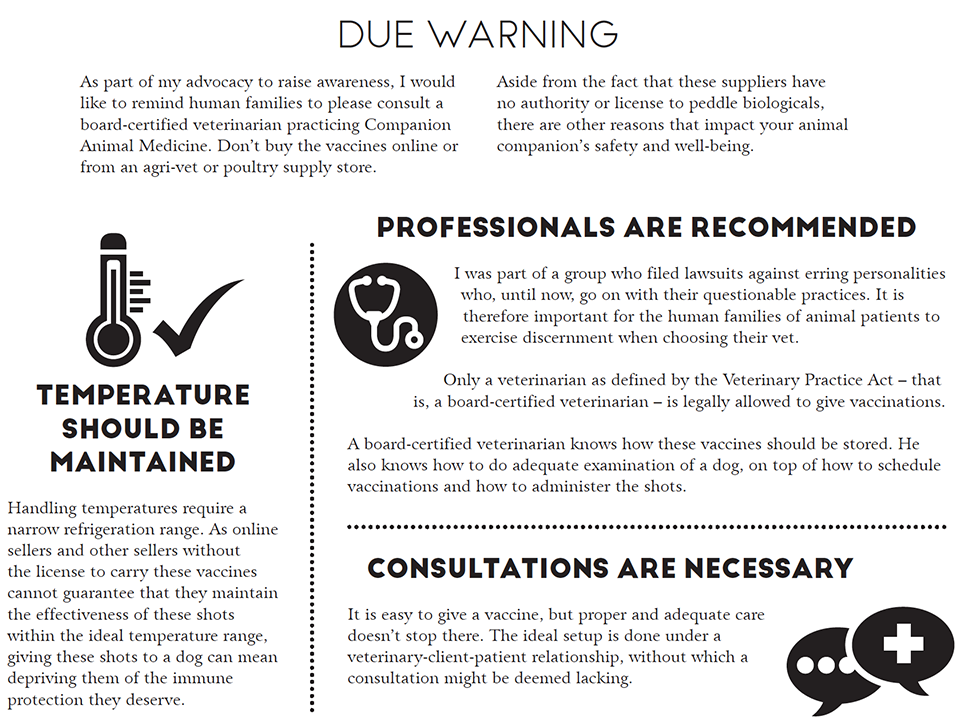Distemperen means “to disturb, upset the proper balance of.” It is taken from the Old French destemprer and directly from medieval Latin distemperare, which means “to vex, make ill.”
From 1640s, it is defined as “disease of the body, malady, indisposition,” specifically in reference to a wasting disease of young dogs by 1747, later extended to other animals to literally mean “upset the proper balance (of bodily humors).”

MORE THAN WORDS
So why does a veterinarian indulge in discussing the Latin etymology of canine distemper?
\There are many Latin and Greek terms in the field of medicine. Ask any physician if they have encountered Latin words in their subjects, and they’re sure to say yes, especially in pharmacology, pathology, and physiology. Some of these terms are already largely abandoned but not frowned upon.
Why do I involve physicians in an article about veterinary medicine? The answer is simple: We practice medicine in animals. If you look at the symbol employed in medicine, foremost is the wand of Aesculapius, known as the caduceus. Veterinary medicine has that symbol, too, with a letter V emblazoned on it for Veterinae, the neutral plural of the Latin word that means “of or pertaining to animals.”
We share terminologies with physicians, and we can perfectly understand what they mean when they use such terms. In fact, as early as our formative years in the paraclinical science, it is a must to embrace the terms as they are rich in history and meaning; otherwise, it is difficult to imagine how one becomes part of the medical community.
And now that we know what the word distemper means in the literal sense, we can focus on what the definition means to us as humans caring for animals who are diagnosed with it.

UNIQUE CHALLENGESIN VETERINARY CARE
So, what are the signs and symptoms of canine distemper?
The difference between signs and symptoms is more significantly felt in veterinary medicine. In human medicine, for the most part, the patient can describe their symptoms: what they are, when they started, and how they are affecting the individual.
In veterinary medicine, the clinician must develop a keen sense of what’s wrong with an animal upon presentation by first understanding what is considered normal. The animal cannot describe his symptoms, so skills in pattern recognition is a necessary skill among veterinary professionals.
A veterinary clinician must master skills in investigating history, in listening to his client’s narration of things as to which came first, and sometimes, in estimating the age of the animal. Generally, the word signalment comes to mind, which describes important basic information about a patient, namely the species, breed, age, and sex. We further classify sex according to whether or not the animal is entire, which means that none of its reproductive organs have been removed.
After all of these have been taken into consideration, a preliminary dichotomy of conditions that have been added and removed from the working diagnosis is made, in case it is difficult to come up with just one presumptive diagnosis.

SIGNS VERSUS SYMPTOMS
The objective ones – in other words, the manifestations of the disease that can be verified by others – are called signs, while the subjective ones – which the patient feels and therefore cannot be directly verified by health professionals – are called symptoms.
Pain, for instance, cannot be quantified directly; a health professional will have to confirm its existence using indirect means, such as through an elevated heart rate, as needed. In other words, it is a subjective manifestation, and is therefore called a symptom. On the other hand, fever, which can be verified directly with a thermometer, is an objective manifestation, and is referred to as a sign.

HOW IS IT DIAGNOSED?
The canine distemper virus enters the host through the nasal or oral route and promptly starts replication in the lymphoid tissues. This results in severe immunosuppression.
Starting around 20 days after infection, neurologic signs may be observed, such as circling, head tilt, nystagmus, partial or complete paralysis, convulsions, and even dementia. Involuntary twitching or contraction of muscles, preceded by chewing movements, are usually called “chewing gum fits” by veterinary professionals.
Diagnosis is based on signs and tests for presence of virus-specific antibody or antigen using Rapid test kits, and in large teaching hospitals, the use of RT-PCR, ELISA, or indirect IF assays.

SENSITIVE MANAGEMENT
Once I suspect distemper, I make it a point to examine and test the patient on a table separate from where I usually examine other animals to prevent the spread of the virus, especially to susceptible patients. Fortunately, in my clinic, there’s a waiting room outside that is large enough exactly for that purpose.
For years, I’ve exercised a polite decorum whenever I explain to the humans of dogs with distemper that like any other ordinary clinic, we don’t usually confine those with a confirmed diagnosis, and big hospitals can’t do it either, unless they have isolation units.
Euthanasia is the last resort. But even if it were permissible, it isn’t necessarily recommended, unless [the animal’s death is merely being prolonged and the animal is suffering.]
HOW IS DISTEMPER TREATED?
MILD MANIFESTATIONS
Treatment depends on the severity of clinical signs. For instance, if mild respiratory distress occurs, animals may be treated at an outpatient basis with supportive care, including nebulization, antibiotics for any secondary infections, mucolytics, and cough suppressants.
SEVERE MANIFESTATIONS
If signs are more severe, dogs may require hospitalization, and they should be housed in isolation.
MANAGEMENTNEUROLOGIC INVOLVEMENT
If neurologic disturbances are present (e.g., paralysis, semi-coma, seizures), euthanasia may be considered.
WHAT IS THE OUTCOME?
Prognosis is definitely guarded. I will not give false reassurances of survival and recovery, as doing so can give false hope to a dog’s human family.

HOW IS DISTEMPER PREVENTED?
Preventive heath maintenance is a mainstay. I’d rather be safe than sorry. Even with advances in treatment, it would be careless to say that many have survived distemper and it should therefore be expected in every patient.When a dog is about 6 to 8 weeks of age, I insist on vaccination with the usual distemper-parvo shots as they are essential in providing protection. Patients are referred outside for scheduled vaccinations, in case the patient’s favorite vet is not around.








